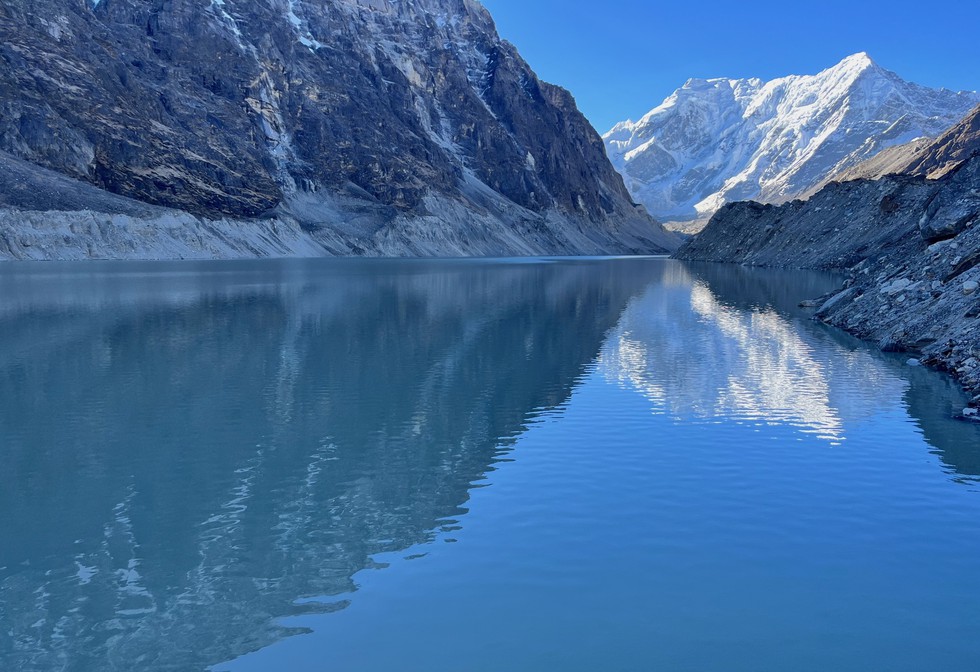
About Central Water Commission (CWC):
- It is a premier technical organization of India in the field of water resources.
- It is presently functioning as an attached office of the Ministry of Jal Shakti, Department of Water Resources, River Development, and Ganga Rejuvenation, Government of India.
- Headquarters: New Delhi
Functions:
- The Commission is entrusted with the general responsibilities of initiating, coordinating, and furthering, in consultation with the State Governments concerned, schemes for control, conservation, and utilization of water resources throughout the country for purposes of Flood Control, Irrigation, Navigation, Drinking Water Supply, and Water Power Development.
- It also undertakes the investigations, construction and execution of any such schemes as required.
Organisation Structure:
- It is headed by a chairman, with the status of Ex-Officio Secretary to the Government of India.
- The work of the Commission is divided among 3 wings, namely,
- Designs and Research (D&R) Wing
- River Management (RM) Wing
- Water Planning and Projects (WP&P) Wing.
- Each wing is placed under the charge of a full-time member with the status of Ex-Officio Additional Secretary to the Government of India.
- Each wing, comprising a number of organisations, is responsible for the disposal of tasks and duties falling within the scope of functions assigned to them.
- The National Water Academy, located in Pune, is responsible for training of central and state in-service engineers and it functions directly under the guidance of the Chairman.
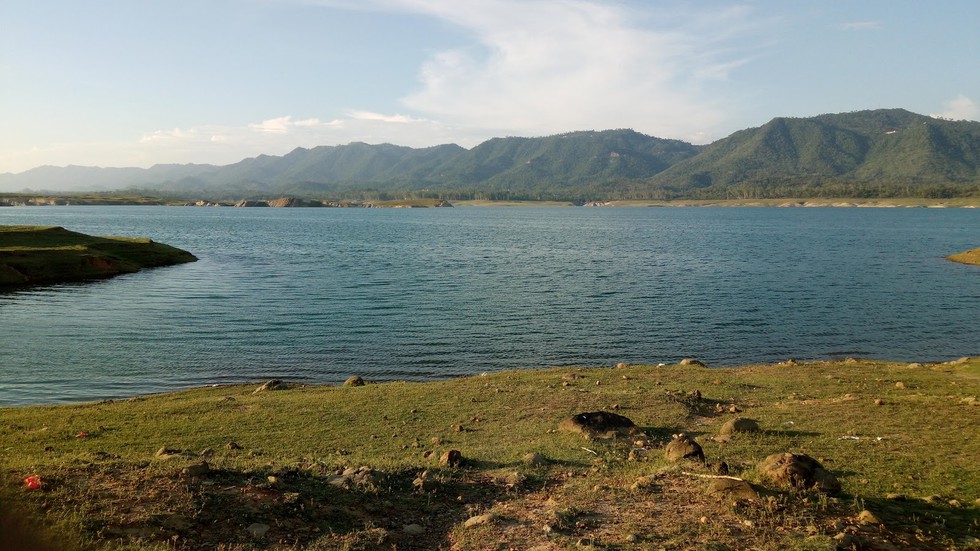
About Gobind Sagar Lake:
- It is a manmade reservoir located in the Una and Bilaspur districts of Himachal Pradesh.
- It is named in honour of Guru Gobind Singh, the tenth Sikh Guru.
- Its source is the Bhakra Dam on the Sutlej River.
- One of the world's highest gravity dams, the Bhakra Dam is perched at an elevation of 225.5 m above its lowest foundations.
- Gobind Sagar reservoir is 90 km. long and encompasses an area of approximately 170 sq. km.
- The maximum and mean depths of the reservoir are 163.07 m and 55 m, respectively, making it one of the deepest man-made lakes in the world.
- It is surrounded by lush green hills and the snow-capped peaks of the Himalayas.
- It is also the third-largest in the country concerning the storage of water.
- It helps in supplying water for irrigation to the states of Himachal Pradesh, Punjab, Haryana, and Rajasthan, significantly benefiting agriculture in the region.
- Flora and Fauna:
- In 1962, the lake was recognized as the 'waterfowl refuge.'
- Even today, the Gobind Sagar Lake is home to many species of birds and animals like Panther, Wolf, Chausinga, Sambar, Hyena, Sloth bear, Nilgai, Chinkara and wild boar.
- It is home to fifty species and sub-species of fishes namely Tor Putitora (Mahasheer), Labeo Dero (Gid), Mystus Seenghala (Singhara) and mirror carp.
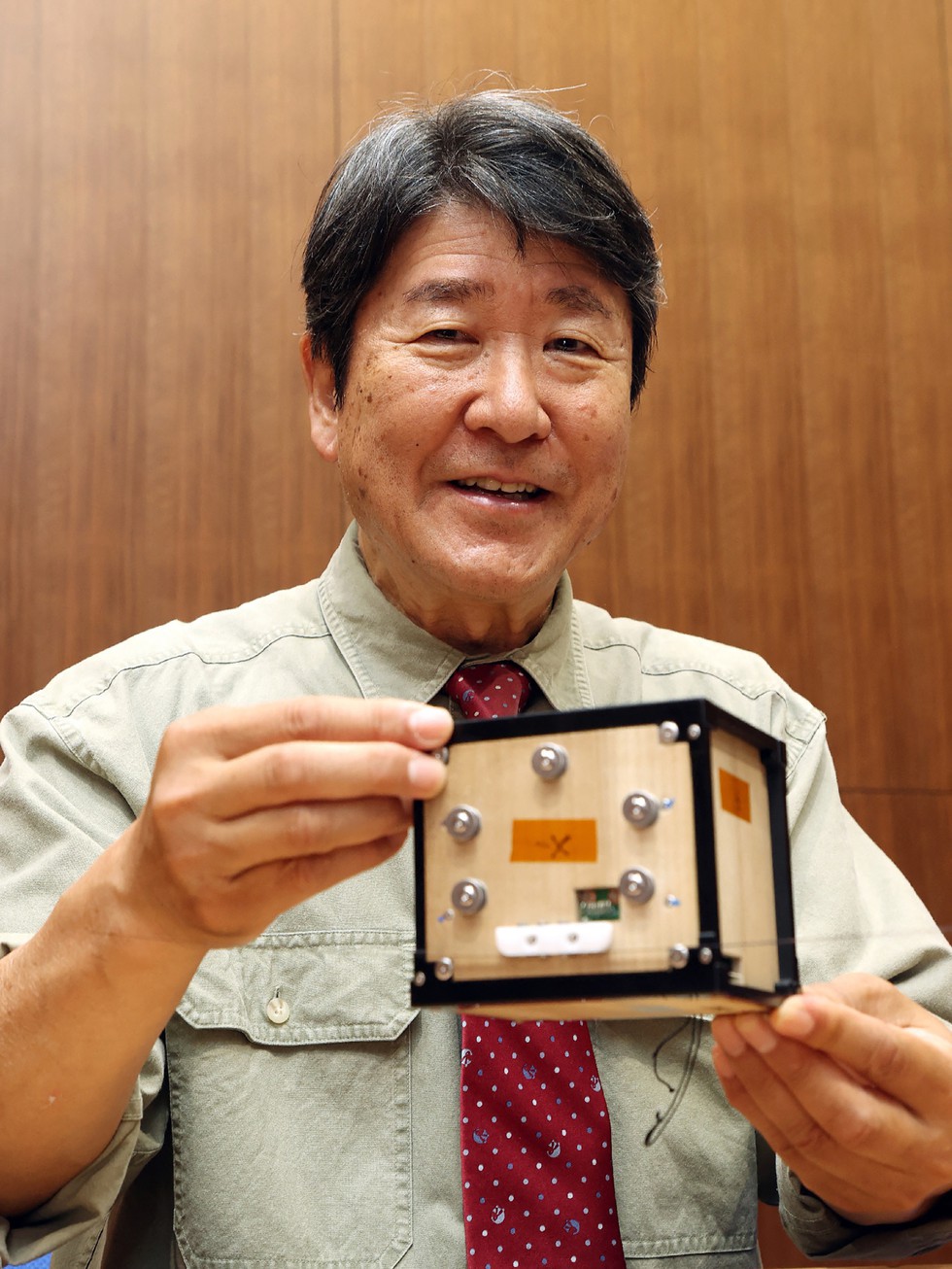
About LignoSat:
- LignoSat”, a fusion of “ligno” (the Latin word for wood) and “satellite”.
- It is developed through collaborative research and development by a team comprising members from Kyoto University and Sumitomo Forestry Co.
- Objective:Their objective is to leverage the eco-friendliness and cost-effectiveness of wood in space exploration.
- It is tasked to demonstrate the cosmic potential of renewable material as humans explore living in space.
- It is constructed from magnolia wood, chosen for its durability and adaptability.
- It will first be sent to the International Space Station (ISS) aboard a SpaceX rocket from the Kennedy Space Center.
- Once it reaches the ISS, it will be released from the Japanese experiment module to test its durability and strength.
- Researchers will receive data from the satellite to monitor its performance, including signs of strain and its ability to withstand extreme temperature changes.
- Why is wood used?
- Wooden satellites are viewed as more environmentally friendly upon reentering the Earth's atmosphere after their mission. Unlike metal satellites, which pose air pollution risks due to the generation of metal particles during reentry, wooden satellites mitigate these concerns.
4. Ralengnao Bob Khathing
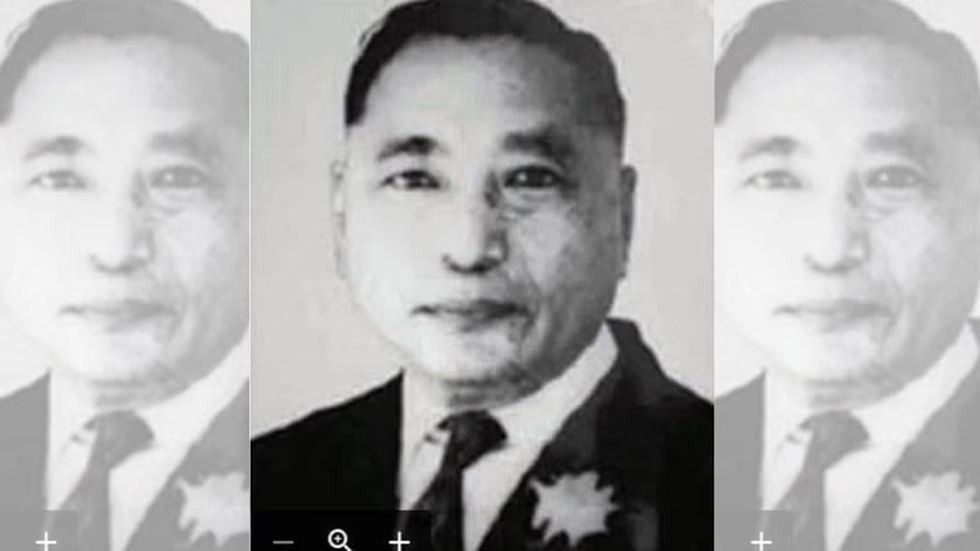
About Ralengnao Bob Khathing:
- Ranenglao ‘Bob’ Khathing was born on February 28, 1912, in Manipur’s Ukhrul district. He was a Tangkhul Naga.
- During World War II he became the first Manipuri to get the King’s Commission.
- Bob Khathing’s Army service
- He was given the coveted award of Member of British Empire (MBE) for his role in galvanising Naga support against the Japanese in Burma and India and also the Military Cross (MC) for his acts of bravery above and beyond the call of duty.
- Bob was commissioned into the 9/11 Hyderabad Regiment (now Kumaon Regiment). In 1942, he was transferred to the Assam Regiment in Shillong.
- During the Second World War, he was part of a guerrilla outfit called Victor Force, raised by the British to combat the Japanese on the Burma-India road.
- He was appointed as advisor to a force known as SANCOL, comprising 153 Gurkha Parachute Battalion which was formed in June 1944 under the command of Major John Saunders, to this force.
- He led the expedition to peacefully integrate Tawang into India.
- He was also instrumental in establishing essential military and security frameworks, such as the Sashastra Seema Bal, Nagaland Armed Police, and the Naga Regiment.
- He was the first person of tribal origin to serve as an ambassador for India in then Burma, now Myanmar.
5. What are Orphan drugs?

About Orphan drugs:
- These are pharmaceutical agents developed specifically to treat rare (orphan) diseases.
- These diseases, though affecting only a small portion of the population, often lead to life-threatening or chronically debilitating conditions. Definitions of orphan drugs vary depending on the regulatory framework.
- There is no formal prevalence-based definition in India, the NPRD of 2021 outlines a framework for diagnosing and treating rare diseases, with a low prevalence threshold expected.
- Orphan drugs are categorised based on the types of diseases they target and their regulatory status.
- Diseases such as genetic disorders, rare cancers, metabolic disorders, and autoimmune conditions frequently fall under the orphan disease category.
- Genetic disorders include conditions like cystic fibrosis and Duchenne muscular dystrophy.
- Rare cancers like neuroblastoma and gliomas also qualify for orphan drug development.
- Metabolic disorders, such as Gaucher’s disease and Fabry disease, and autoimmune diseases, like systemic sclerosis, also benefit from orphan drugs.
- For a drug to receive orphan drug designation, it must meet certain criteria that vary across countries.
- Typically, the disease in question must have a low prevalence, the condition must lack approved treatments, or the orphan drug must provide significant benefits over current treatment options.
- Developers of orphan drugs must also provide scientific evidence that the drug has the potential to treat or alleviate the condition.
- This evidence can be presented at any stage of drug development, from preclinical research to late-phase clinical trials.
- Once designated, orphan drugs receive several incentives to encourage their development, including market exclusivity, tax credits for research and development (R&D) expenses and fee waivers for regulatory applications.
6. Mount Lewotobi Laki-Laki

About Mount Lewotobi Laki-Laki:
- It is located on Flores Island.
- It is a volcanic mountain situated in East Nusa Tenggara province of
- The volcano is part of a twin-volcano system that the local residents perceive as male and female mountains.
- The ongoing volcanic eruption has occurred at the male counterpart of the system (Lewotobi Lakilaki) while the female mountain is known as Lewotobi Perempuan.
- The two mountains are classified as stratovolcanoes which are the most commonly occurring volcanoes around the world and are formed by the layers of lava that repeatedly oozes out of the crater.
- It is not uncommon for Indonesia to witness such volcanic eruptions as it is situated along the famous ‘Ring of Fire’ in the Pacific region- an encirclement dotted by active volcanoes that sit on top of vigorous tectonic plates that often collide and lead to seismic activity causing earthquakes and tsunamis.
What are Stratovolcanoes?
- It is a tall, steep, and cone-shaped type of volcano.
- Unlike flat shield volcanoes, they have higher peaks.
- They are typically found above subduction zones, and they are often part of large volcanically active regions, such as the Ring of Fire that frames much of the Pacific Ocean.
- Strato Volcanoes comprise the largest percentage(~60%) of the Earth's individual volcanoes, and most are characterized by eruptions of andesite and dacite, lavas that are cooler and more viscous than basalt.
7. Ningol Chakkouba Festival
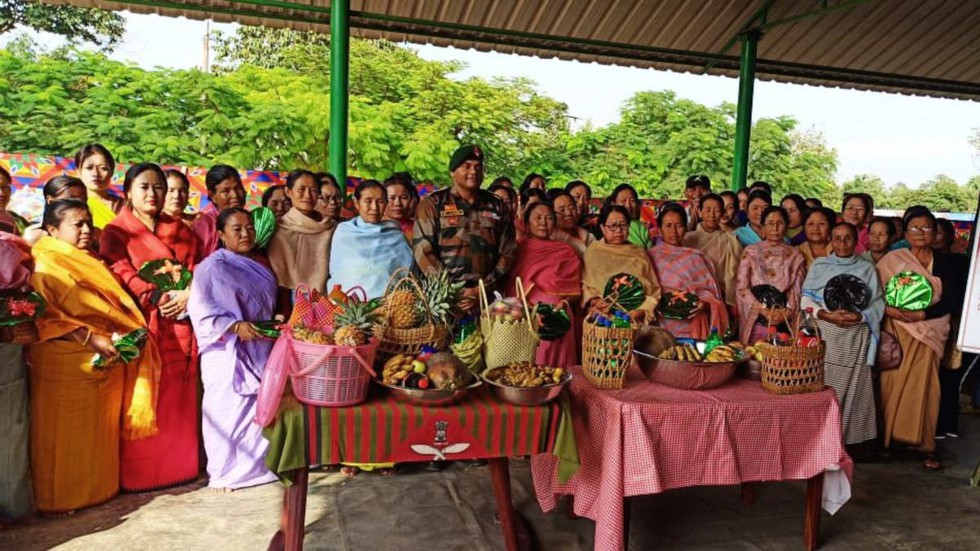
About Ningol Chakkouba Festival:
- The festival is held every year on the second day of the lunar month of Hiyangei of the Meitei calendar.
- The festival is mainly celebrated by the Meiteis but nowadays many other communities also have started to celebrate it as it emphasises the importance of happiness and the reunion of a family in bringing peace and harmony in a society.
- Ningol means ‘married woman’ and Chakouba means ‘invitation for feast’; so, the festival is the one where the married women are invited to their parent’s home for a feast.
- The main component of the festival is the visit of married sisters to their maternal homes for a grand feast and joyous reunion followed by the giving away the gifts.
- It is customary for the son of the family to extend a formal invitation to his sister for Ningol Chakkouba a week in advance of the gathering. The festival is held today outside Manipur where Manipuris are settled.
Key facts about the Meitei Community
- They are the predominant ethnic group of Manipur State.
- Language: They speak the Meitei language(officially called Manipuri), one of the 22 official languages of India and the sole official language of Manipur State.
- Distribution:
- The Meiteis primarily settled in the Imphal Valley region in modern-day Manipur, though a sizable population has settled in the other Indian states of Assam, Tripura, Nagaland, Meghalaya and Mizoram.
- There is also a notable presence of Meitei in the neighbouring countries of Myanmar and Bangladesh.
- Clans: They are divided into clans, the members of which do not intermarry.
- Economy:Rice cultivation on irrigated fields is the basis of their economy.
8. What is Tumaini Festival?
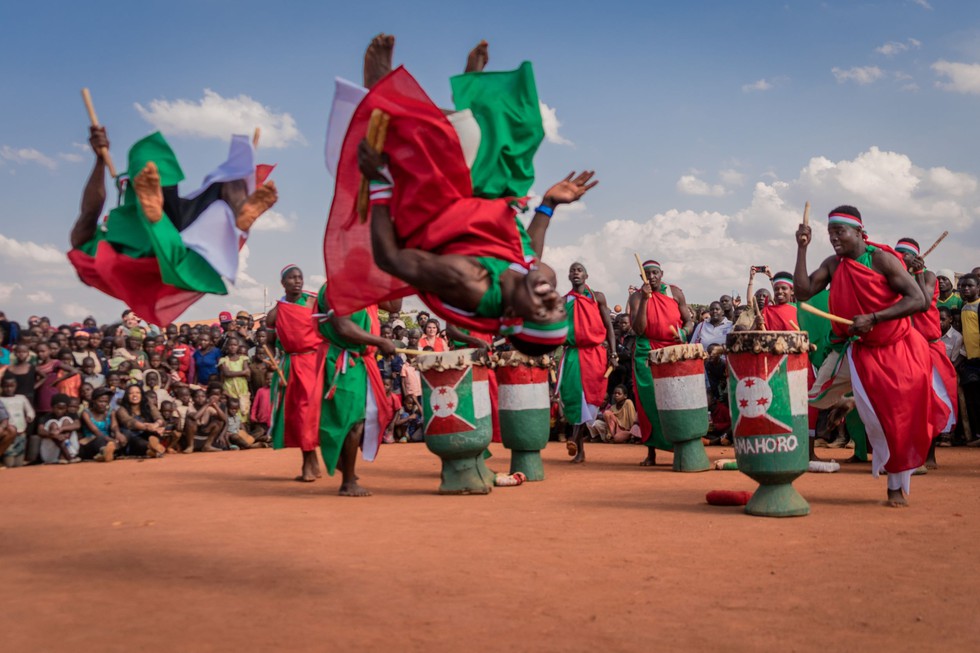
About Tumaini Festival:
- Founded in 2014, the Tumaini Festival is a cultural event held annually within the Dzaleka Refugee Camp in Malawi.
- It is the only festival of its kind in the world that is held within a refugee camp.
- The festival is organized and managed by refugees, creating a platform for displaced people that fosters community, solidarity, and cultural exchange.
- The Tumaini Festival attracts thousands of attendees every year and features performances by acts from all around the world.
- The festival showcases a diverse array of artistic expressions, including music, dance, theatre and visual arts.
- It received a Cultures of Resistance Award (CoR Award) in 2024.
Key Facts about Malawi:
- It is a landlocked country in Southeastern Africa.
- It shares borders with Tanzania, Mozambique, and Zambia.
- Capital: Lilongwe
- Major languages: English and Chichewa (both official)
- Currency: Malawi kwacha (MWK)
- Endowed with spectacular highlands and extensive lakes, it occupies a narrow, curving strip of land along the East African Rift Valley.
- Lake Nyasa (one of the deepest lakes in the world), known in Malawi as Lake Malawi, accounts for more than one-fifth of the country’s total area.
- Malawi remains one of the poorest countries in the world. The economy is heavily dependent on agriculture, which employs over 80% of the population.
About Dzaleka Refugee Camp:
- It is the only permanent refugee camp in Malawi.
- It was established in 1994 in response to a surge of forcibly displaced people fleeing genocide, violence, and wars in Burundi, Rwanda, and the Democratic Republic of Congo (DRC).
- For the past 30 years, the camp has received refugees and asylum seekers from Somalia, Ethiopia, and other countries.
9. Yanadi Tribe

About Yanadi Tribe:
- Yanadis are one of the major scheduled tribes of Andhra Pradesh.
- They are among the most vulnerable tribal groups in India. They live in extreme conditions of poverty and social exclusion.
- A significant population of Yanadis live in the plains of Nellore, a district in the eastern coastal state of Andhra Pradesh.
- Their population according to 2001 census reports is 4,62,167 in Andhra Pradesh.
- Their mother tongue is Telugu.
- Historically, the Yanadis have been associated with occupations such as hunting, gathering, and agriculture, relying on their intimate knowledge of the land and its resources for sustenance.
- They have rich traditional health knowledge, including knowledge for everyday healthcare and specialized knowledge (e.g., snakebite cures).
- They harness the medicinal potential of plants for treating gastrointestinal disorders, respiratory ailments, skin conditions, and reproductive health issues.
- Yanadis have many religious beliefs and festivals connected with the forest flora.
- Dhimsa Dance: It is a dance performed by the Yanadi tribe during festivals and special occasions.


























































































































































.png)
.png)
.png)
.png)
.png)


.png)
.png)
.png)





.png)
.png)






.png)
.png)
.png)
.png)
.png)
.png)
.png)
.png)
.png)

.png)







.png)
.png)


.png)
.png)
.png)


.png)

.png)
.png)





.jpg)

.png)
.png)


.png)

.png)
.png)
.png)

.jpg)

.jpg)


.png)

.png)
.png)
.png)
.png)
.png)
.png)
.png)
.png)
.png)
.png)




.png)

.png)





.png)
.png)
.png)
.png)
.png)
.png)
.png)
.png)
.png)
.png)
.jpg)
.jpg)

.png)
.png)
.png)
.png)
.png)
.png)
.png)
.png)
.png)
.png)
.png)
.png)
.png)
.png)
.png)
.png)
.png)
.png)
.png)
.png)
.png)
.png)



.png)
.png)

.jpg)
.jpg)


.jpg)
.jpg)
.jpg)
.jpg)
.jpg)

.jpg)








.jpg)
.jpg)
.jpg)
.jpg)
.jpg)

















.jpg)
.jpg)







.jpg)


















.jpg)
.jpg)






























































































.jpg)
.jpg)


























.jpg)

.jpg)










.jpg)








.jpg)




.jpg)










.jpg)


















.jpg)












































.jpg)














.jpg)
.jpg)
.jpg)





.jpg)

.jpg)
.jpg)





































































.jpg)


































.jpg)
.jpg)
















































.jpg)












.jpg)


.jpg)




.jpg)
.jpg)
.jpg)

.jpg)
.jpg)
.jpg)
.jpg)

.jpg)
.jpg)
.jpg)

.jpg)
.jpg)
.jpg)
.jpg)
.jpg)
.jpg)
.jpg)
.jpg)

.jpg)


.jpg)
.jpg)
.jpg)
.jpg)
.jpg)
.jpg)
.jpg)
.jpg)
.jpg)
.jpg)











.jpg)
.jpg)





.jpg)
.jpg)
.jpg)
























.jpg)
























.jpg)









.jpg)
.jpg)







.jpg)
.jpg)









































.jpg)
.jpg)
.jpg)
.jpg)
.jpg)

.jpg)
.jpg)
.jpg)
.jpg)
.jpg)


.jpg)
.jpg)
.jpg)
.jpg)
.jpg)

.jpg)
.jpg)
.jpg)
.jpg)
.jpg)
.jpg)
.jpg)
.jpg)
.jpg)
.jpg)
.png)

.png)
.png)

.png)
.png)
.png)
.png)


.jpg)
.jpg)

.jpg)
.jpg)
.jpg)

.png)
.png)
.png)
.png)
.png)
.png)
.png)

.png)
.png)
.png)
.png)
.png)
.png)
.png)
.png)
.png)
.png)





































































-min.png)



.png)




.png)








































